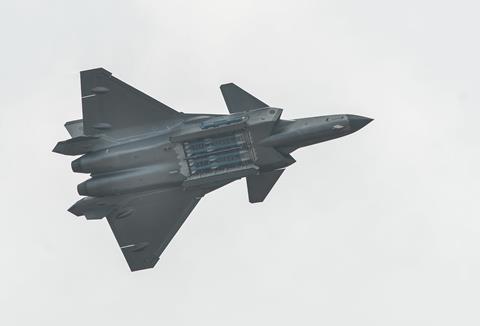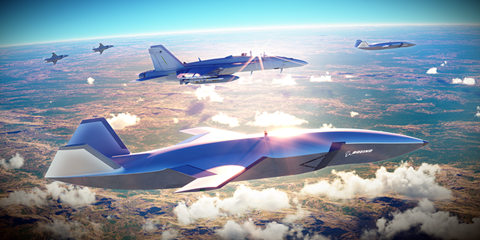The coronavirus pandemic is hitting Asia-Pacific economies at a time when the deterrent capabilities of air power are more essential than ever.
Air power is a peculiar subtheme of the pandemic in the Asia-Pacific region. Globally, air forces have used transport assets to ship urgent supplies to allies. China’s Xian Y-20 and other aircraft were instrumental in flying equipment and personnel to the Chinese city of Wuhan, for example, where the virus originated in 2019.

As China recovered from the pandemic, however, its use of air power took a more menacing turn. It took the opportunity to mount aggressive probing flights into the airspace of Taiwan, a vibrant democracy that Beijing claims as a breakaway province. The US Air Force, for its part, defied the challenges of coronavirus to conduct training sorties to the region with long-range bombers, demonstrating its power projection capabilities.
Given Beijing’s rapid arms build-up of the last two decades, the need for improved regional airpower is abundantly clear. What is less apparent is how the economic fallout of coronavirus will affect defence spending and – by extension – air power acquisitions.
SPENDING HIKE
Beijing announced in May that it would boost its annual defence budget by 6.6% to CNY1.3 trillion ($178 billion). While most China observers believe the true figure is much higher, it is certain that it will continue to invest in acquiring more Chengdu J-20 stealth fighters, advanced variants of the Chengdu J-10, and a broad array of other types. Chatrooms dealing with Chinese air power suggest a new naval fighter, possibly based on the AVIC FC-31, will appear in 2021.
Malcolm Davis, senior analyst, defence strategy and capability at the Australian Strategic Policy Institute, contends that the impact of coronavirus on defence budgets will be a mixed bag.
“For Asia, the big uncertainties are states like Indonesia, India and the Philippines – states with poor health care and high population densities,” he says.
“The potential for rapid spread in these states is high. If there was a rapid spread across these states that would inevitably erode their economic growth, and it’s likely that that would undermine any ability to sustain defence acquisition.”

All three countries have ambitious plans for new fighters and other aircraft. India, which recently saw a border dispute flare up with China, has long required well over 100 new fighters, but was unable to close this deal even before the pandemic. Similarly, Jakarta was already quibbling with Seoul about costs involved with the joint Korea Aerospace Industries KF-X fighter, while the Philippines may have to push back a decision about new combat aircraft.
On the other hand, Australia, citing great power competition, has committed to a massive A$270 billion ($187 billion) of defence spending over the next decade, of which A$65 billion will go to airpower, including more Lockheed Martin F-35As and other new systems. Japan has not disclosed its post-coronavirus defence budget, but has ambitious plans to buy up to 147 F-35s, as well as developing a new Future Fighter programme.
“My guess is that poorer states will choose butter over guns, but larger states will prioritise increased defence expenditure,” says Davis.
“Air power is obviously important, but like any modern military technology, it takes time to acquire new capabilities – and frankly, there may not be that much time. Australia’s prime minister suggested that today’s environment is in some ways like the 1930s, and I think that’s accurate.”
Global defence budgets special
- 1
- 2
- 3
- 4
 Currently reading
Currently readingCoronavirus to crimp Asia-Pacific airpower spending






















